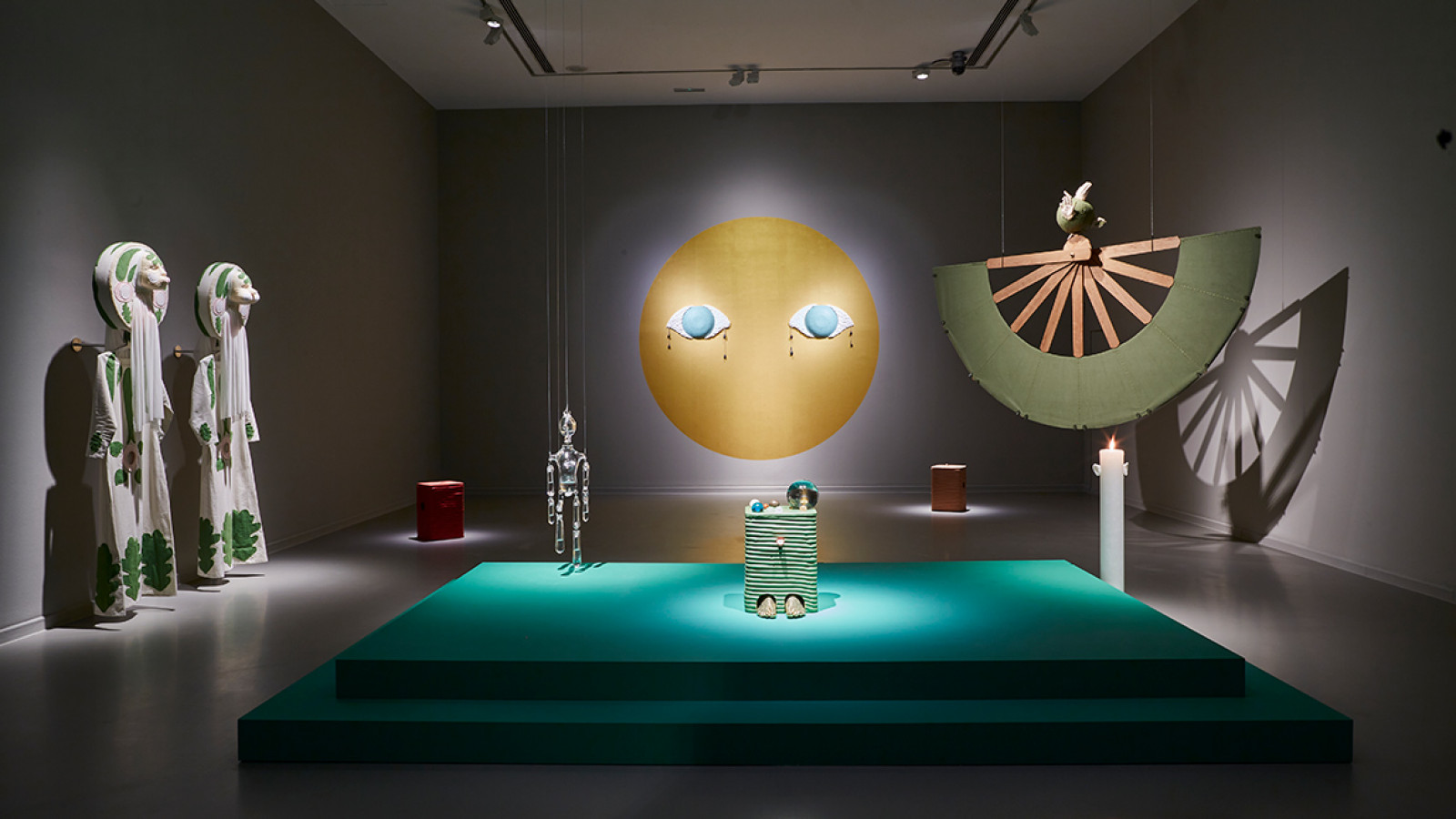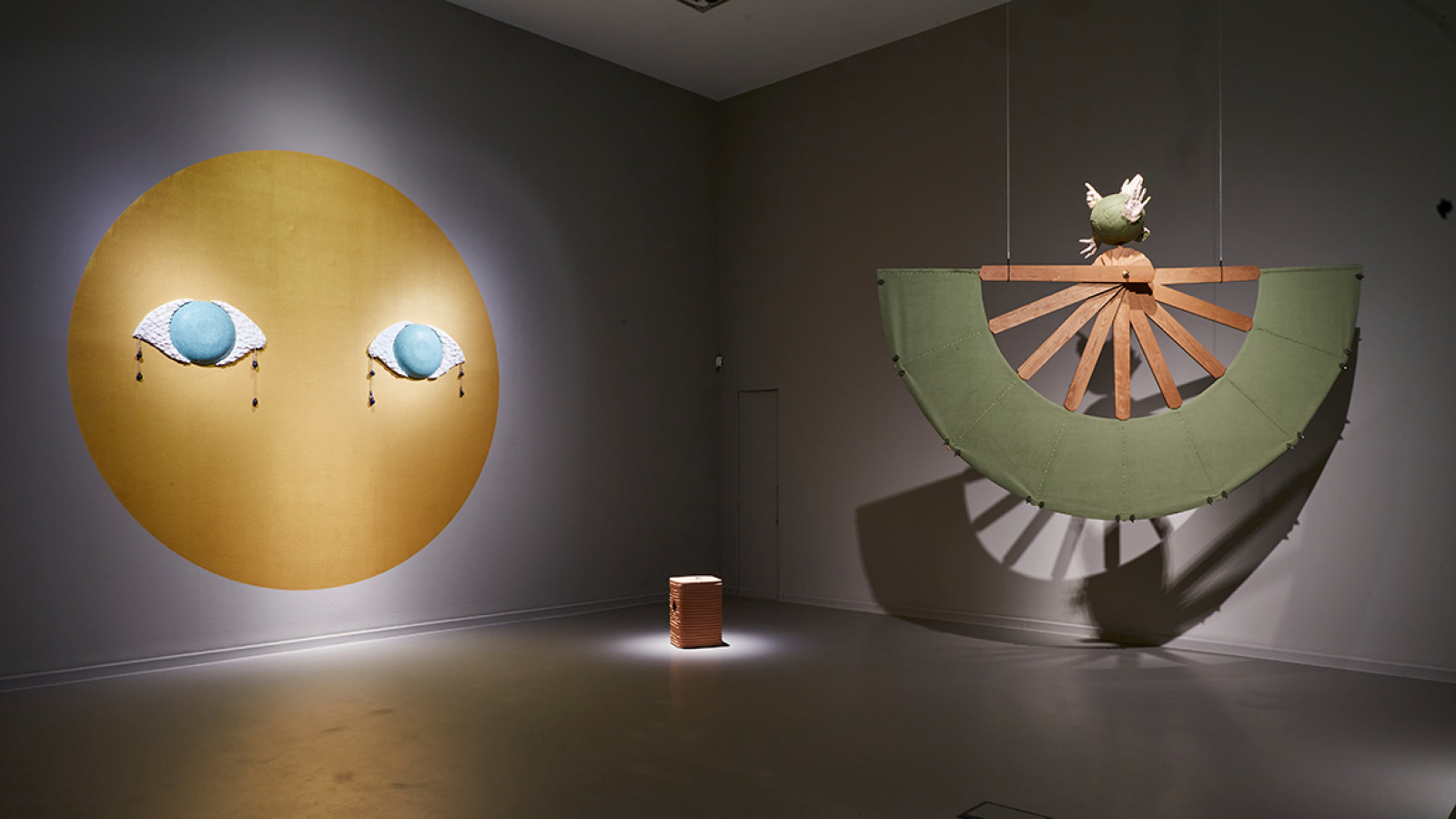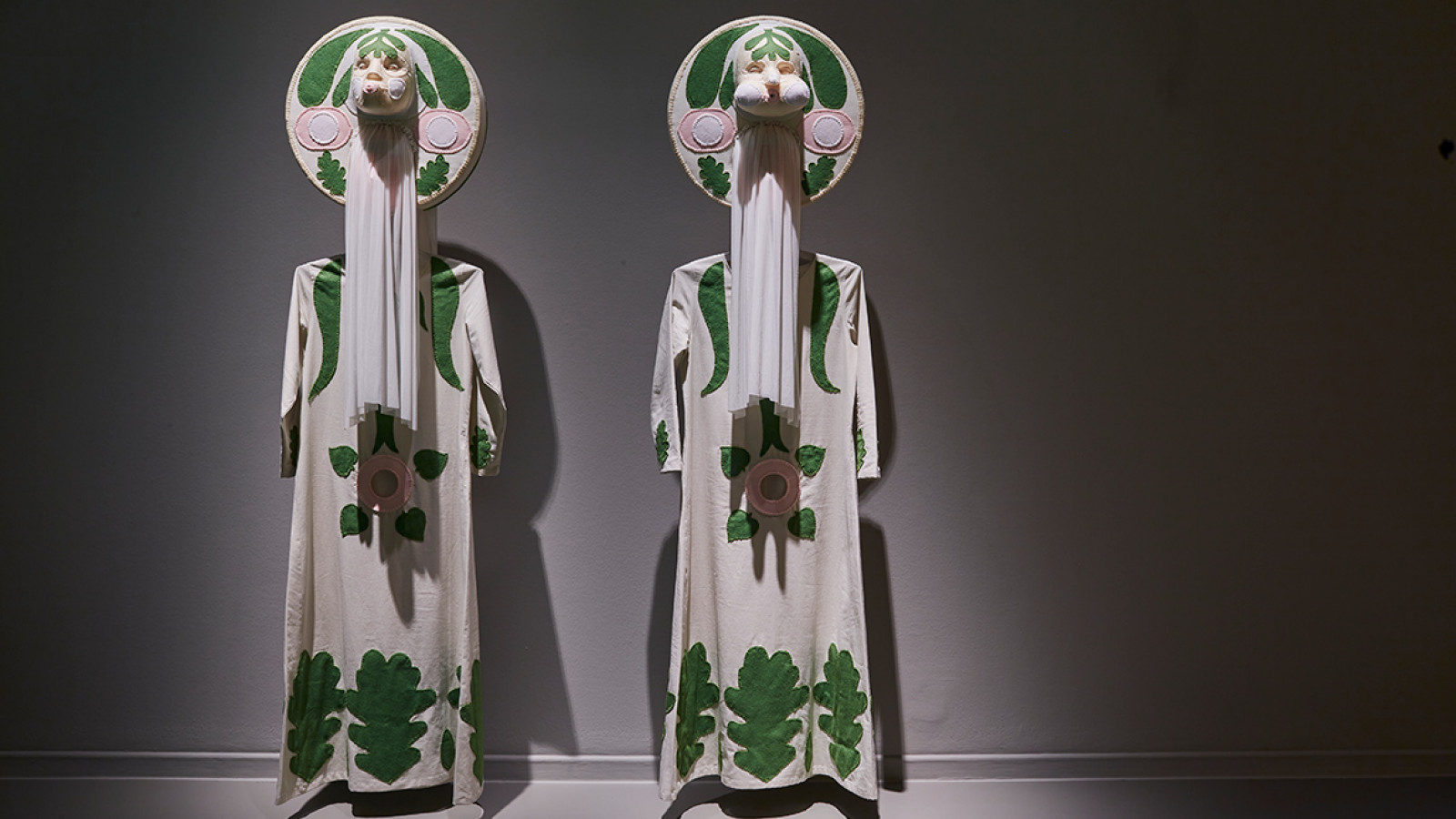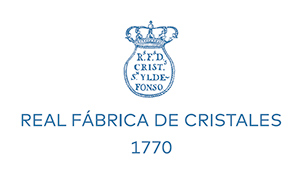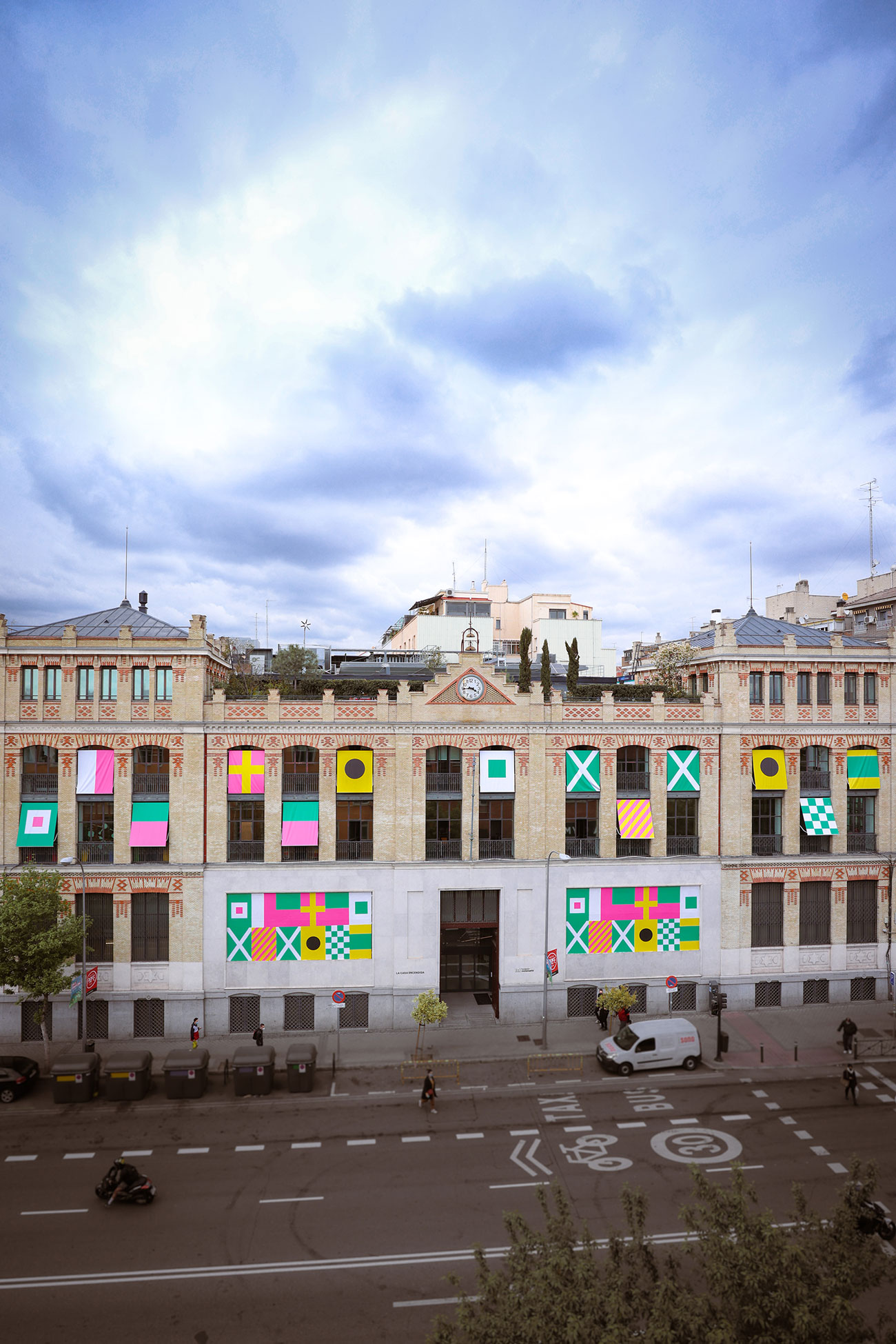I’m Still Learning. Jonathan Baldock
Entitled I Am Still Learning [Aún aprendo], British artist Jonathan Baldock’s exhibition is the third episode of the cycle An Involuntary Trace, curated by This is Jackalope for La Casa Encendida.
Baldock’s starting point is the drawing by Goya of the same title (I Am Still Learning), which shows an old man walking along with great difficulty as he leans on two crutches. The image initially conjures up the will and the need we all have to continue to learn despite the shortcomings of old age. However, what Baldock is mostly interested in is the feeling of humility it expresses in today’s context of anthropocentric crisis and the urgency of adopting a listening attitude towards Nature. Baldock is presenting an alternative reality from which to recover our ability to connect to the elements, synchronising once again with our natural surroundings and, in the wider sense, with the planet itself. I Am Still Learning is an imaginary, queer scenario located in another space-time which transports us into a universe of healing.
How can we set up a new relationship with our planet? One that transcends the uses and abuses of human enjoyment and empowerment. In his book Plant-Thinking: A Philosophy of Vegetal Life, Michael Marder —a philosopher who is associated with environmental thinking—exhorts us to revise the concept of objectivity as he introduces us to vegetal thinking. He proposes the notion of phytocentrism to address life in its relation to the inorganic, developing the concepts of communities of growth, trans-species and/or trans-kingdom. In The Life of Plants, Emanuele Coccia suggests we learn from the vegetal world, especially in everything related to its ability to adhere to its surrounding environment.
There is not only a vindication of nature here, but also of other rhythms and measures of time, above and beyond those that are based on productivity and efficiency, or on a linear development driven towards a future of presumably infinite growth. Working slowly for long periods of time not only generates a close affinity with the employed materials but also leads us to an intimate, community-wide form of healing. The present show denotes a clear intention to connect with the earth and its rhythms while we reassess our place in the world. The pieces on display have been crafted with natural materials (clay, sackcloth, beeswax, water, hand-blown glass, wood) with a view to providing material experiences through the five senses and the five elements. A felt fan represents the air; a blown-glass puppet, suspended in the room, holds water in parts of its body that act as tumblers; a lighted candle listens with a pair of molten human ears, bringing fire into the space; five clay stools of different hues represent the earth, while each of them embodies one of the senses (in accordance with the Aristotelian classification); two large golden eyes observe the interaction between the works on display and the spectators, representing ether (the fifth and most powerful element, often depicted as a deity).
Room A is bathed in a sound and smell that once again appeal to our senses. On the one hand, there is the soundscape designed by Luke Barton, reproducing barely audible murmurings and abstract buzzing to give voice to objects and organic materials, creating a simultaneous conversation between them. Alex Margo Arden, for her part, has designed a soft and inexplicable smell shadow made up of forty-two chemical synthetic products. Its composition is based on historical narratives taken from internet forums for communities interested in the paranormal.
The exhibition space will activate during its inauguration with a performance by Baldock and his collaborator, fellow artist Rafał Zajko. Attired in ceremonial dress and headgear that enlarge and distort their human proportions, they will assume the role of carers of the elemental beings in the room.
Ours is an age in which different currents appeal to a rejection of the scripted, excessively simplistic and rational world that conditions us. The vindication of margins and their areas of darkness is ever-more evident, together with a search for alternative methods of knowledge that trace new trajectories between ancient thought and contemporary creation. This potentiality or possibility of exploring other realities and alternative worlds feeds into the concept of queer. Baldock guides us through an imaginary, temporal, theatrical and immersive realm in which different symbolic incarnations of the elements serve as communication vessels that help us explore our relations —past and potential—with the earth and nature through the creation of a space in which the rules of the world no longer apply.
Jonathan Baldock (Kent, England, 1980) lives and works in London. His work often takes on a biographical form, addressing topics such as trauma, stress, sensuality, mortality and the spirituality surrounding our relationship to our bodies and the space they inhabit. Baldock makes use of many different techniques, including sculpture, installations and performance art. Some of his most important individual exhibitions are Me, Myself and I (Kunsthall Stavanger, Norway, 2020); Facecrime (suspect) (Stephen Friedman Gallery, London, 2020); and Facecrime (Camden Arts Centre, London, 2019), which subsequently travelled to Tramway (Glasgow) and Bluecoat (Liverpool).
With the support of Stephen Friedman Gallery, London.
